2 Best And Safest Routes To Climb Mount Everest
Introduction
When it comes to conquering the world’s highest peak, Mount Everest, it is essential to plan your climb carefully and choose the best and safest route. In this comprehensive guide, we will provide you with detailed information on the two most recommended routes to climb Mount Everest: the South Col Route and the Northeast Ridge Route. By following our expert advice and insights, you can make an informed decision and maximize your chances of a successful and safe ascent.
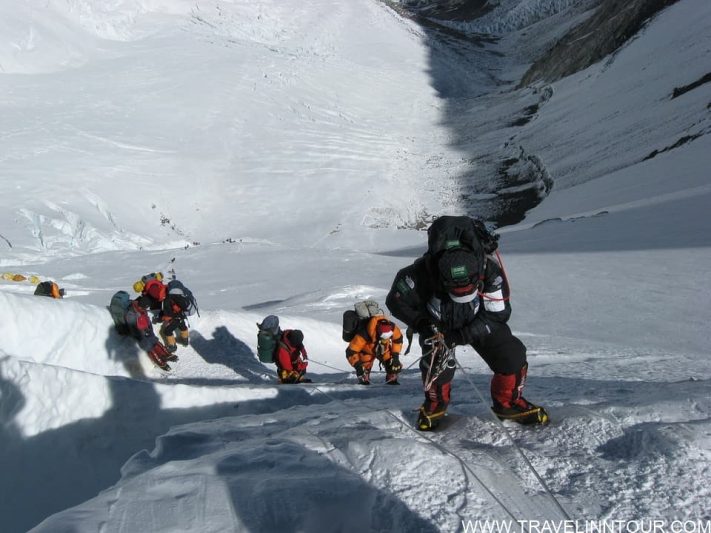
1. South Col Route
The South Col Route is the most popular and widely chosen path to summit Mount Everest. This route starts from the Nepalese side of the mountain and offers several advantages, including better acclimatization opportunities and a more gradual ascent. Here are the key features of the South Col Route:
- Overview:
- The Everest South Col Route is the most frequently used route to climb Mount Everest from the south side, starting from Nepal.
- It was first successfully climbed by Sir Edmund Hillary and Tenzing Norgay in 1953.
- The route starts at the Everest Base Camp (5,364 meters) and gradually ascends through different camps until reaching the South Col (7,906 meters), located between Mount Everest and Lhotse.
- Camps along the route:
- Base Camp (5,364 meters): The starting point of the expedition. Climbers spend several weeks here for acclimatization and training.
- Camp 1 (6,065 meters): Located on the Western Cwm, a wide, gently sloping valley of snow and ice.
- Camp 2 (6,500 meters): Situated at the foot of the Lhotse Face, a steep and icy section.
- Camp 3 (7,200 meters): Positioned on the Lhotse Face, climbers face steep climbing and exposure to avalanches.
- Camp 4 (7,906 meters): Also known as the South Col, climbers make their final push to the summit from this camp.
- Challenges and hazards:
- Altitude: The Everest South Col Route reaches extreme altitudes, and climbers are susceptible to altitude sickness, including symptoms like headache, nausea, and fatigue.
- Khumbu Icefall: Situated between Base Camp and Camp 1, this section is highly dangerous due to the constantly shifting glacier and seracs.
- Lhotse Face: A steep and icy slope between Camp 2 and Camp 3, where climbers need to navigate fixed ropes and ladders.
- Hillary Step: A famous rock step just below the summit, requiring careful climbing and coordination.
- Training and preparation:
- Physical fitness: Climbers should engage in endurance training, including hiking, running, and strength training, to prepare their bodies for the physical demands of the expedition.
- Technical skills: Familiarity with mountaineering techniques, rope handling, and crevasse rescue is crucial for safe passage through the route.
- Acclimatization: Spending sufficient time at each camp to allow the body to adjust to high altitudes is essential for avoiding altitude-related illnesses.
- Timeframe and weather conditions:
- The climbing season for the Everest South Col Route is typically from late April to early June, when the weather conditions are relatively stable.
- However, weather can still be unpredictable and harsh, with strong winds, extreme cold, and snowfall. Climbers need to be prepared for sudden changes and potential delays.
Base Camp and Acclimatization
The journey begins at Everest Base Camp (5,380 meters/17,600 feet), where climbers spend several weeks acclimatizing to the high altitude. This period allows the body to adjust to the decreasing oxygen levels, reducing the risk of altitude sickness.
Khumbu Icefall
From Base Camp, climbers traverse the treacherous Khumbu Icefall, a constantly shifting and dangerous section of the route. Crossing this icefall requires careful navigation and the use of ladders and ropes to maneuver through deep crevasses and towering ice seracs.
Hillary Step
One of the most iconic and challenging sections of the South Col Route is the Hillary Step, named after Sir Edmund Hillary, one of the first climbers to successfully reach the summit. This rocky outcrop demands careful maneuvering and is often equipped with fixed ropes to assist climbers.
Summit Push
The final summit push from Camp 4 is an arduous endeavor that requires climbers to battle extreme weather conditions, low oxygen levels, and sheer physical exhaustion. With the right preparation, determination, and experienced guides, reaching the summit of Mount Everest on the South Col Route is a remarkable achievement.
2. Northeast Ridge Route
The Northeast Ridge Route, also known as the North Col Route, starts from the Tibetan side of Mount Everest and presents a unique set of challenges and rewards. Here’s what you need to know about this route:
- Overview:
- The Northeast Ridge route starts from the north side of Everest, which is accessible from Tibet.
- It is considered more technically challenging compared to the Southeast Ridge route (from the Nepal side), making it a preferred choice for experienced climbers seeking a greater adventure.
- Base Camp:
- The journey typically begins from the Everest Base Camp (EBC) on the Tibetan side, which is situated at an altitude of approximately 5,180 meters (16,995 feet).
- From EBC, climbers establish several high camps along the route, strategically positioned at different elevations to allow for acclimatization.
- Key Features:
- Three prominent features along the Northeast Ridge route are the First, Second, and Third Steps.
- The First Step is an imposing rock band that requires technical climbing skills.
- The Second Step is a steep section with a 40-foot ladder, which plays a vital role in assisting climbers to ascend.
- The Third Step is a vertical rock wall that demands careful maneuvering.
- Another notable feature is the “Yellow Band,” a distinctive yellowish-gray rock formation that climbers encounter.
- Three prominent features along the Northeast Ridge route are the First, Second, and Third Steps.
- Challenges:
- The Northeast Ridge route presents several challenges, including extreme weather conditions, high altitude, and demanding technical sections.
- Climbers must be prepared for freezing temperatures, strong winds, and limited oxygen levels in the “Death Zone” above 8,000 meters (26,247 feet).
- It is essential to have prior mountaineering experience, physical fitness, and proper training before attempting this route.
- Rewards:
- Despite the challenges, the Northeast Ridge route offers breathtaking panoramic views of the Himalayas and surrounding peaks.
- Climbers get the chance to witness the sunrise from the “Roof of the World” and experience a profound sense of accomplishment upon reaching the summit.
- The route provides an opportunity to explore the rich cultural heritage of Tibet and interact with local communities along the way.
What is Mount Everest Base Camp?
Mount Everest Base Camp is a popular destination for trekkers and climbers who want to experience the grandeur of Mount Everest, the highest peak in the world. It serves as a starting point for expeditions to conquer the summit and offers breathtaking views of the surrounding Himalayan mountains. Here is some insightful information about Mount Everest Base Camp:
- Location:
- Mount Everest Base Camp is located in the Khumbu region of Nepal.
- It lies at an altitude of approximately 5,364 meters (17,598 feet) above sea level.
- The camp is situated on the southern side of Everest, known as the Nepalese side.
- Purpose:
- Mount Everest Base Camp serves as a temporary settlement for climbers and trekkers during their ascent.
- It provides a place for rest, acclimatization, and preparation before attempting to reach the summit.
- Climbers spend several weeks at the base camp to adjust to the high altitude and extreme weather conditions.
- Trekking Experience:
- The journey to Mount Everest Base Camp is an exhilarating trek that offers stunning natural beauty and cultural encounters.
- Trekkers follow the iconic route through picturesque Sherpa villages, lush valleys, and majestic glaciers.
- Along the way, you will witness prayer flags, monasteries, suspension bridges, and the famous Namche Bazaar, a bustling Sherpa market town.
- Challenges and Preparations:
- Trekking to Mount Everest Base Camp requires physical fitness, endurance, and proper acclimatization.
- Altitude sickness is a common challenge due to the high elevation, so it’s essential to take it slow and listen to your body.
- Adequate preparation, including cardiovascular exercises, strength training, and hiking at high altitudes, can help in minimizing risks and maximizing enjoyment.
- Highlights:
- Standing at the base camp, you’ll have a spectacular view of Everest’s massive peak, as well as other towering mountains like Lhotse and Nuptse.
- Interacting with the Sherpa people, renowned for their mountaineering skills and warm hospitality, is a cultural highlight of the journey.
- Experiencing the unique flora and fauna of the Sagarmatha National Park, a UNESCO World Heritage Site, adds to the allure of the trek.
Visiting Mount Everest Base Camp is an adventure of a lifetime, offering a glimpse into the world of high-altitude mountaineering and the awe-inspiring Himalayas. Whether you are a seasoned climber or a passionate trekker, this extraordinary journey will leave you with unforgettable memories.
Remember, always prioritize safety, follow the guidance of experienced guides, and respect the natural environment while embarking on this incredible adventure. Happy trekking!
Advanced Base Camp
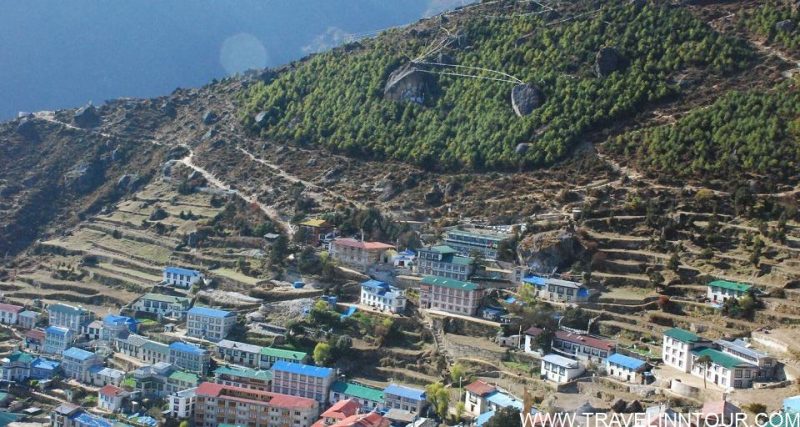
Beyond the Base Camp, climbers establish Advanced Base Camp (ABC) at an elevation of 6,500 meters (21,325 feet). This camp serves as a vital acclimatization point before moving higher up the mountain.
Snowy Slopes and Ridges
As climbers progress, they encounter steep snowy slopes and narrow ridges, including the famous First, Second, and Third Steps. These sections demand careful footwork and often require the use of fixed ropes and supplementary oxygen.
The Balcony
One notable landmark along the Northeast Ridge Route is the Balcony, a small platform at approximately 8,400 meters (27,560 feet). Here, climbers can pause for a brief rest and marvel at the breathtaking views before pushing towards the summit.

Final Stretch to the Summit
The final stretch to the summit is characterized by exposed ridges and a steady incline. Climbers need to navigate cautiously and manage their energy levels effectively, as exhaustion and altitude-related challenges become more pronounced.
Conclusion
In conclusion, both the South Col Route and the Northeast Ridge Route offer unique and challenging paths to climb Mount Everest. The South Col Route is renowned for its popularity and gradual ascent, while the Northeast Ridge Route presents distinct cultural experiences and technical climbing challenges. Whichever route you choose, it is crucial to prioritize safety, undergo thorough training, and seek guidance from experienced mountaineers. With adequate preparation and determination, you can embark on the journey of a lifetime and stand atop the majestic summit of Mount Everest.
Remember, climbing Mount Everest is an extreme endeavor that requires physical fitness, mental resilience, and adherence to safety protocols. Always consult with professional guides and experienced mountaineers before undertaking such an extraordinary feat.
FAQ – Routes To Mount Everest
What is The Death Zone On Mount Everest?
The Death Zone on Mount Everest is a term used to describe the highest altitudes on the mountain where the oxygen levels are extremely low and the conditions are extremely harsh. This zone, typically above 8,000 meters (26,000 feet), poses significant challenges and dangers to climbers. Here’s some insightful information about the Death Zone on Mount Everest:
- Oxygen deprivation: The Death Zone is characterized by a severe lack of oxygen. At this altitude, the oxygen levels drop to about one-third of what they are at sea level. The thin air makes it difficult for climbers to breathe, resulting in reduced physical and mental performance.
- Physiological effects: The low oxygen levels in the Death Zone can lead to a range of physiological effects on the human body. Some of these effects include hypoxia (oxygen deprivation), increased heart rate, difficulty in maintaining body temperature, impaired judgment, and reduced muscle coordination.
- Acclimatization: Climbers spend several weeks acclimatizing to the high altitudes before attempting to reach the Death Zone. Acclimatization involves gradually ascending to higher altitudes to allow the body to adjust to the reduced oxygen levels. This process helps climbers mitigate the risks associated with the Death Zone.
- Time limitations: Due to the limited availability of oxygen and the physiological challenges, climbers can only spend a short amount of time in the Death Zone. Typically, climbers aim to reach the summit and descend back to lower altitudes within 24 to 48 hours to minimize the risk of altitude sickness, frostbite, and other life-threatening conditions.
- Harsh weather conditions: The Death Zone is also known for its extreme weather conditions, including high winds, sub-zero temperatures, and frequent snowstorms. These conditions further add to the risks and challenges faced by climbers, making it crucial to choose suitable weather windows for summit attempts.
Examples of the challenges faced in the Death Zone:
- Climbers often experience extreme fatigue and exhaustion due to the combination of physical exertion and lack of oxygen.
- Frostbite becomes a serious concern as the body’s extremities are at risk of freezing in frigid temperatures.
- Altitude sickness, such as pulmonary edema and cerebral edema, can occur due to the body’s struggle to adapt to the high-altitude environment.
When Was Mount Everest First Climbed?
Mount Everest, the highest peak in the world, has a fascinating history of human exploration and conquest. The first successful ascent of Mount Everest is a remarkable achievement that took place on May 29, 1953. Here are some key points and examples to help you understand the timeline and significance of this historic event:
- The initial attempts:
- In the early 1920s, several expeditions were organized to explore the possibility of climbing Mount Everest.
- The British Mount Everest expeditions of 1921, 1922, and 1924 were notable attempts during this period.
- The 1921 expedition:
- Led by Lieutenant Colonel Charles Howard-Bury, this expedition focused on reconnaissance and mapping of the region.
- Despite not reaching the summit, the team made significant progress in understanding the challenges of climbing Everest.
- The 1922 expedition:
- This expedition, led by Brigadier General Charles Bruce, aimed to reach the summit.
- Although they faced various setbacks, including the loss of several team members in an avalanche, they set a record altitude of 8,320 meters (27,300 feet).
- The 1924 expedition:
- The British climbers George Mallory and Andrew Irvine made their final attempt to reach the summit.
- Unfortunately, Mallory and Irvine disappeared during their summit bid, and it remains uncertain whether they reached the top. Their disappearance added a sense of mystery and intrigue to the history of Everest.
- The successful ascent in 1953:
- The British Mount Everest expedition of 1953, led by Colonel John Hunt, achieved the first confirmed successful ascent of Mount Everest.
- The climbers who reached the summit were Sir Edmund Hillary, a New Zealand mountaineer, and Tenzing Norgay, a Nepalese Sherpa mountaineer.
- They reached the summit on May 29, 1953, via the South Col route.
- Significance of the first ascent:
- The successful ascent of Mount Everest in 1953 captured the world’s attention and symbolized a triumph of human endurance and exploration.
- Sir Edmund Hillary and Tenzing Norgay became international heroes, and their achievements paved the way for further mountaineering expeditions on Everest.
It is important to note that there were earlier attempts and expeditions that contributed to the eventual success of reaching the summit. The first confirmed ascent in 1953 remains a significant milestone in the history of Mount Everest.
What Does it Cost to Climb Mount Everest?
Climbing Mount Everest is an incredible adventure that requires careful planning and considerable financial investment. The costs associated with climbing Mount Everest can vary based on several factors such as the route chosen, the expedition company, and the level of support provided. Here’s a breakdown of the expenses you can expect when embarking on this epic journey:
- Climbing Permit:
- The climbing permit is a significant portion of the total cost. For Mount Everest, the permit fee can range from $11,000 to $25,000, depending on the season and the route chosen.
- During the peak climbing season, which is typically in spring (April-May), the permit fee is higher. Whereas, during the off-season, the fee is relatively lower.
- Expedition Operator:
- Most climbers choose to join an expedition led by a reputable operator. These operators provide essential services such as guides, Sherpa support, food, and accommodation.
- The cost of joining an expedition can range from $30,000 to $85,000. The price variation depends on the level of service, the experience of the guides, and the length of the expedition.
- Some operators offer more affordable options, but it’s crucial to ensure their safety standards and track record.
- Equipment and Gear:
- Climbing gear is another significant expense. You’ll need specialized equipment like mountaineering boots, down suits, climbing harnesses, ice axes, crampons, and oxygen cylinders.
- High-quality gear can cost anywhere from $5,000 to $10,000, depending on the brand and the quality of the equipment. Renting gear is also an option that can help reduce costs.
- Travel Expenses:
- Consider the costs of international flights to the nearest airport, typically Kathmandu in Nepal. Prices can vary based on your location and the time of booking.
- Additionally, you may need to budget for accommodation, meals, and transportation in Kathmandu before and after the climb. These expenses can add up to a few thousand dollars.
- Training and Preparation:
- It’s crucial to invest in proper training and preparation to increase your chances of a successful climb. This may involve joining mountaineering courses, hiring personal trainers, or attending altitude training programs.
- Training costs can vary depending on the duration and the specific training you choose. It’s recommended to allocate at least $5,000 to $10,000 for training and preparation.
- Miscellaneous Expenses:
- There are several miscellaneous expenses to consider, such as visa fees, travel insurance, medical examinations, vaccinations, and communication costs. These costs can add up to a few thousand dollars.
Remember that these are approximate costs, and the actual expenses can vary based on individual choices and circumstances. It’s essential to research and carefully select a reputable expedition operator to ensure your safety and increase your chances of a successful climb.
Keep in mind that climbing Mount Everest is not only a financial commitment but also a physically and mentally demanding endeavor. Proper preparation, training, and experience are crucial for a safe and successful climb.
Save it on Pinterest
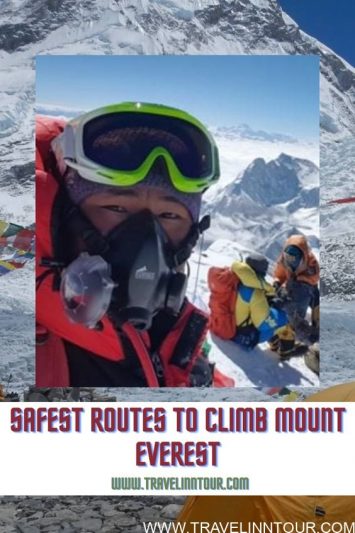


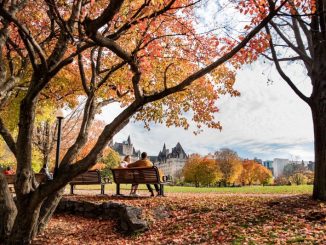
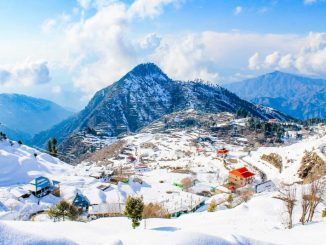
Be the first to comment